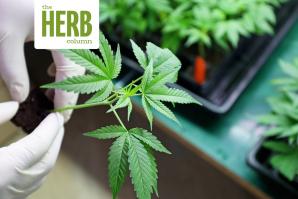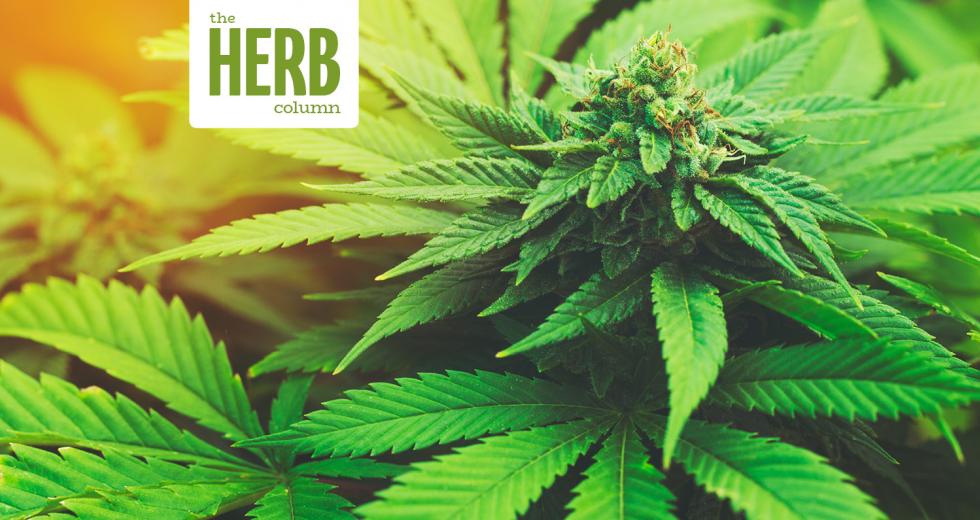Following the passage in November 2018 of five ballot measures in El Dorado County laying the groundwork for a fully legalized and regulated cannabis industry, many local leaders and members of the commercial cannabis community were optimistic.
Cultivators, manufacturers of edibles and similar products, and others in the unregulated market looked forward to making the county a hub of legitimate businesses providing a high-quality product. County officials, along with taxpayers who voted for the initiatives, looked forward to an estimated $3-4 million in annual revenue derived from taxes on every aspect of the newly legalized industry.
Click here to read more of our monthly cannabis column.
Almost a year after the county created a specific plan following the measures’ passage, some remain optimistic, while others voice concern that things are coming together too slowly.
Rod Miller, legislative director of the El Dorado County Growers Alliance, supported the ballot measures, worked alongside the ad hoc committee that included county supervisors John Hidahl and Sue Novasel, and ran a campaign to help get the referenda passed.
“There is a large cannabis cultivation community out here in the hills,“ says Miller, a government relations expert who formed the Alliance in 2017. “So as a practical matter, it was the best sort of public policy to take the legalization path. We were happy that the measures got such wide support in the community — all of them got more than 60 percent support. And we were glad that the county added more uses, such as manufacturing, testing labs and nurseries, so that we can have a whole cannabis economic ecosystem here.”
The five measures allowed voters to decide on various aspects of the cannabis industry separately. Measure N laid out a detailed plan for taxation, permitting and enforcement of commercial cannabis activities. It created tax rates for various types of cultivation, as well as manufacturing, distribution, retail and testing. It also created a regulatory enforcement program. Its passage was required in order for the other measures to be viable. Measures P and Q authorized outdoor and greenhouse cultivation for medical and recreational cultivation; Measures R and S allowed for indoor medicinal and recreational grows.
The Growers Alliance also supported efforts to develop a stronger enforcement system so the county could take action against illegal grows. That support became stronger, Miller says, following the death of Sheriff’s Deputy Brian Ishmael, who was killed while responding to a call about marijuana thefts last October.
Miller is still hopeful the passage of the measures will lead to a thriving legal marijuana industry, and thinks El Dorado County-grown weed could develop a reputation due to the Sierra Foothills’ climate and soils, in the same way that the El Dorado American Viticultural Area has become a respected appellation in the wine world. But he’s concerned there might be some roadblocks built into the new regulations.
Miller estimates there are as many as 500 marijuana growers in El Dorado County, including many with medical marijuana permits and others growing commercially who would like to become legal. While he is encouraging his group’s members to begin the application process for permits, he says, very few are doing so.
“We are not seeing anywhere near the adoption that we hoped for, and that the county hoped for,” Miller says. He believes that might be due to the regulations being too restrictive.
“The way things are set up now, somebody who wants to put together one of the larger permitted operations is going to spend the same amount of money as somebody building a housing development,” he says. He also points to a restriction that mandates an 800-foot setback at cultivation facilities. “That will make it impossible for growers who are not on huge lots.”
Scott Martin, owner of Appleseed Horticulture, a growers supply store in Placerville, agrees that the setback restriction is problematic. “To make that work with a two-acre canopy, you probably need a piece of property that’s about 100 acres,” Martin says. “That rule alone guarantees that no average person could get into the business here.”
Creighton Avila, a deputy chief administrative officer for El Dorado County who spearheaded the initiative process, says he remains confident the new regulations will lead to the creation of a healthy industry. He says he has received 25-30 pre-applications for the 150 available cultivation permits and believes many more will arrive soon, as the spring growing season approaches. He concedes that the cost of entry to the legal cannabis industry is steep, which might account for the relatively slow rate of adoption.
“The fact is, (local growers) are coming from an unregulated market into a regulated market, and they are learning what many people know about the cost of doing business in California,” Avila says, adding that the restrictions in the new regulations will solve genuine problems. “We get a lot of complaints about some of the smaller grow operations,” he says, “because they’re growing in places where they don’t belong — places that are zoned residential and not for agriculture.”
As for the 800-foot buffer, Avila says the rule was adopted to prevent a “green rush,” in which speculators from out of the area buy up land and drive up property values, as happened in neighboring Calaveras County in 2016. He says the rule does not apply to anyone who owned their property prior to the passage of the measures.
“We wanted to allow, for people who’ve been here for a while, a way to get in and get legal,” he says. “Those folks don’t have to create an 800-foot setback, they just need to show that they meet the intentions of the setback,” which include preventing strong odors, the glare of greenhouse lights and noise from generators. Essentially, Avila says, “they just need to talk to their neighbors.” He says he is encouraging smaller local growers to form alliances, so multiple operators can share expenses and grow their businesses.
Avila says El Dorado County took great care in creating language for the measures that would allow a local cannabis industry to flourish and still “create confidence in the community.” He says he and other county staffers visited communities throughout California that had put cannabis-legalization measures in their books. “We asked them what was working, and if they had to do it over again, what would they do differently,” he says. “And we brought what we found to the community at 40 public meetings.”
“This is very controversial,” Avila says. “We heard this from folks in Sonoma County: Just because 60 percent of voters approved legalization doesn’t mean they want it next to their house.”
Martin, who says he’d been in the business for 20-plus years when he opened his Placerville store in 2012, still holds out hope that El Dorado County will become a leader in the legal marijuana industry. He talks about the genetics of plants that have been bred in these hills for decades, which, thanks to the heat and the dry air, can grow especially large; one “old-timer,” he says, has developed a strain of cannabis sativa that produces 20 pounds per plant. He is enthusiastic about the local home-grown product, but in order for a local industry to really succeed, he says, the federal government and the rest of the world should understand marijuana is not evil.
“The amount of canopy allowed by the county is way more than could be sold locally,” he says, “and there is already a glut statewide. It’s well known that most of what is grown in California heads east. When the rest of the country figures out that they’ve been brainwashed into believing there’s something wrong with this plant, when the opposite is true, then we’ll be getting somewhere.”
–
Get our monthly herb column and other great web
stories delivered to your inbox every week: Subscribe to the Comstock’s newsletter
today!
Recommended For You

The Herb Column: Is Onsite Smoking on Its Way?
Sacramento City Council could soon decide whether to permit people to light up in smoking lounges and cafes
For proponents of legal cannabis, Prop. 64 will forever be a landmark. But another ballot measure — Prop. 65, passed 30 years earlier in 1986 — gets almost no attention, although it also affects state government’s approach to cannabis.

The Herb Column: SMUD Sees Green Energy
Sacramento’s municipal power company is helping cannabis-growing customers be more energy efficient
SMUD is exploring ways to meet increased energy demands where cannabis cultivation operations are concentrated.

The Herb Column: Higher Education
Budtenders may become the new drug educators in Sacramento
The legalization of adult-use marijuana in November 2016 created an opportunity for California to rethink drug education programs, as a portion of the tax revenue from the new commercial cannabis market must go to education programs.

The Herb Column: Where Did All the Cannabis Watchdogs Go?
Why Comstock’s is launching THC, a monthly column on the cannabis business
Getting reliable information about cannabis may be more important than ever. But finding reliable cannabis information has become harder because of another trend — the decimation of newsroom staffs.




Comments
Thanks for keeping us in the info loop. Especially big Corp v local growers.